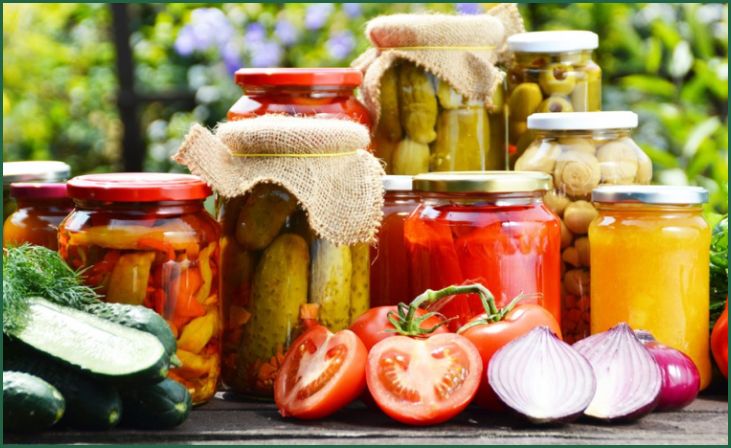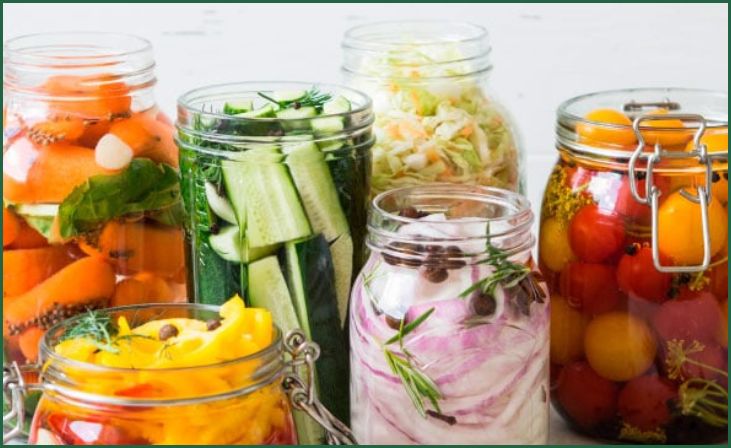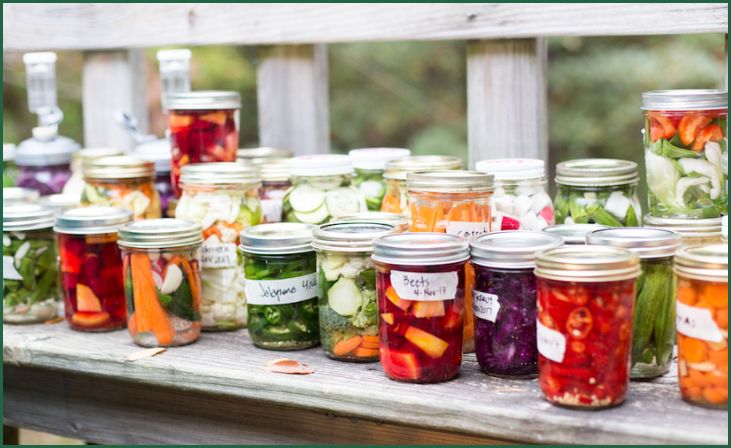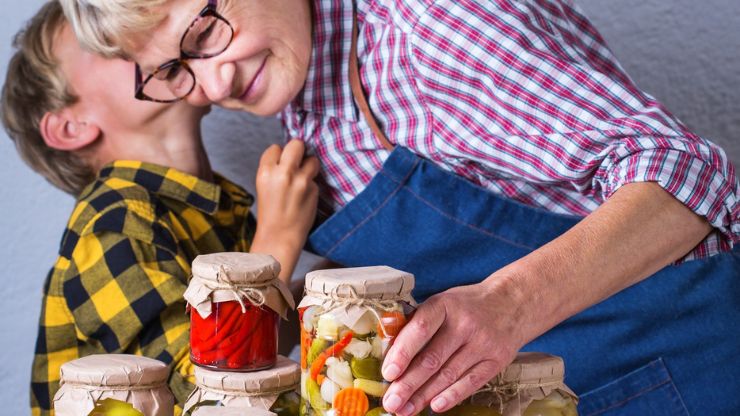In a world where modern conveniences often take center stage, there’s something profoundly satisfying about reconnecting with age-old traditions. One such tradition, “the art of fermenting like our great grandmas,” is making a triumphant comeback in culinary circles. This technique, which involves harnessing the power of microbes to preserve and transform food, offers not only a delicious way to enjoy flavors but also a range of health benefits. Join us on a journey to explore the art of fermentation and how it’s making waves in contemporary kitchens.
Table of Contents
ToggleWhat Exactly is Fermentation?

Fermentation provides us with three major benefits. Fermenting is nothing more than preserving food while also making it more digestible for humans. One of the most well-known fermented foods is sauerkraut. But, as a third argument, we’d like to bring up nutritional density: Fermented foods often contain more nutrients than non-fermented meals. That is why it is called the art of fermenting.
Sauerkraut and other foods are preserved by placing them in a container and covering them with a coating of salt. This stage allows for the formation of lactic acid, which is later fermented. In this setting, however, bad bacteria cannot spread. Furthermore, the nutritional content is preserved for weeks and months.
The Art of Fermenting Like Our Great Grandmas
Fermentation, an ancient food preservation technique, involves the conversion of carbohydrates into alcohol or organic acids using microorganisms like bacteria, yeast, or fungi. The practice has been the art of fermenting, a cornerstone of traditional diets for centuries, and is known for enhancing both the flavor and nutritional profile of foods. In a world that’s constantly seeking ways to improve health, going back to fermenting like our great-grandmas offers a unique opportunity to do so naturally.
Unlocking the Benefits of Fermentation for Your Health
In the realm of health and nutrition, the concept of fermentation might appear redundant to many. While fermented foods certainly can’t replace the allure of fresh produce, the convenience of supermarkets during colder months remains unmatched. However, if you happen to possess a garden, fermentation could be the key to preserving your homegrown vegetables, allowing you to savor their flavors later in the year.
Yet, the power of fermentation transcends mere preservation. Within this process, lactic acid bacteria emerge as unsung heroes, nurturing the health of our intestines, thereby bolstering our immune system. A robust immune system, fortified by active immune cells, acts as a shield against diseases, laying the foundation for optimal well-being.
Remarkably, approximately 70% of these vigilant immune cells find their abode in our intestines. Augmenting this defense is the infusion of vitamins through our diet, which erects barriers against pathogens while giving our immune system an invigorating boost.
You May Also Like: 5 Ultimate Tips For Making Kombucha Summer Drink.
Fermentation’s Maritime Role

In the annals of maritime history, the shipping industry extensively harnessed the potential of fermented food. This practice ensured that even during winter’s chilly embrace when the cultivation of numerous nutrient-rich vegetables was thwarted, sailors could relish vitamin-packed sustenance. By following straightforward preservation procedures, foodstuffs were conserved, enabling months of consumption.
Demystifying Home Fermentation
Contrary to preconceived notions, the art of preserving foods through fermentation isn’t an arduous endeavor. The toolkit necessitates an assortment of preserving jars, your chosen vegetables, fine salt, and a brine solution. A vital step involves sterilizing the jars in boiling water, securing both cleanliness and prolonged shelf life.
Post sterilization, the following steps are surprisingly uncomplicated. Begin by selecting a favored vegetable and dicing it into cubes or strips. Grating them or combining diverse vegetables is equally viable. Subsequently, compress the vegetables in a bowl to extract their juices—a historical practice, exemplified by stomping sauerkraut with feet.
Don't just scroll, subscribe!
BuzzTrail's unique web-stories are the cure for boredom you've been waiting for.
These vegetable and juice amalgams are then transferred into the chosen preserving jar. Adequate space should be left to accommodate gas development. Gently press the vegetables to minimize oxygen presence. Subsequently, inundate the contents with water until the vegetables are submerged. Introduce salt and spices; typically, a teaspoon of salt suffices.
Position the container in a dark, temperate location, around 15-18 degrees Celsius. Then, patience becomes paramount as you await approximately a week. A fundamental principle governs the process: the longer the fermentation, the richer the flavor profile. Optimal results are achieved between 3 to 6 weeks. Winter preparation through fermentation—is worth exploring!
Beetroot Infused with Horseradish
For those inclined to explore home fermentation, a delectable recipe awaits. While the preparation duration stands at a mere 20 minutes, fermentation extends over approximately 3 weeks.
Ingredients:
- 800 grams of beetroot
- 100 grams of horseradish root
- 20 grams of unrefined fine salt
- 1 liter of brine (comprising 1 liter of water and 25 grams of salt, dissolved)
Initiate by meticulously cleaning, peeling, and thinly slicing the beetroot. Simultaneously, repeat the process with the horseradish root, finely slicing it. Combine the sliced vegetables with 20 grams of salt, ensuring a thorough mix. This concoction should be refrigerated overnight.
Pour the amalgam—along with its juices—into a sterile 1-liter glass jar. Press down the mixture firmly within the jar. Introduce the brine until it resides about 3 centimeters below the jar’s rim. To weigh down the vegetables, consider sanitized glass marbles or a boiled stone. Seal the glass jar, placing it within an ovenproof dish to account for potential brine escape during fermentation. Store the jar in a dim, ambient environment.
The art of fermenting commences within a few days. During the next 2 to 3 weeks, maintain the vegetables in darkness. The final phase entails refrigeration, ensuring sufficient brine immersion to prolong shelf life.
This recipe empowers you to effortlessly preserve a diverse array of vegetables for future consumption.
The Art of Fermenting Vegetables

The palette of vegetables open to fermentation boasts boundless variety. Beyond beetroot and horseradish, ginger, garlic, cabbage, carrots, cauliflower, and even Chinese cabbage (kimchi) extend as options. Every vegetable category, in principle, bears fermentable potential; nonetheless, the preference tilts toward firmer variants for enhanced results. While softer vegetables like tomatoes can tend toward mushiness due to high liquid content, their positive attributes and vitamin content still remain accessible through preservation, contingent on personal preference.
Conclusion
In the realm of culinary arts, the art of fermenting stands as a testament to the marriage of tradition and innovation. From its historical roots to the trending fermenting creations on social media, this age-old technique continues to captivate enthusiasts. As you embark on your fermenting journey, savor the unique flavors, embrace the health benefits, and celebrate the rich cultural tapestry woven into each ferment.
FAQs (Frequently Asked Questions)
Can anyone ferment foods at home?
Can anyone ferment foods at home?
Fermenting is a beginner-friendly culinary technique. Start with simple recipes and gradually explore more complex ferments.
Are there any health risks associated with consuming fermented foods?
Are there any health risks associated with consuming fermented foods?
Generally, fermented foods are safe for consumption. However, individuals with compromised immune systems should consult with a healthcare professional.
How long does it take to see the results of fermentation?
How long does it take to see the results of fermentation?
The time varies based on the type of ferment. Some may be ready in a few days, while others may require weeks or even months for optimal flavor development.
Can I ferment fruits as well?
Can I ferment fruits as well?
Fermented fruits add a delightful twist to your culinary repertoire. Experiment with different combinations to discover your favorite flavors.

